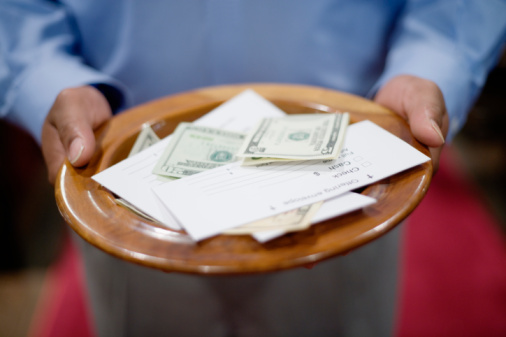From Ecclesiasticus:
Do not grow weary when you pray; do not neglect to give alms.
(From the Daily Office Lectionary – Sirach 7:10 (NRSV) – October 22, 2014)
“Do not neglect to give alms.” Alms: “charitable donations of money or goods to the poor or needy” says the dictionary with an etymological note saying it comes from an old Greek word, eleemosyne, meaning “pity, mercy.”
The fancy plates of wood or brass or silver passed down the rows of pews on Sunday morning are called “alms basins” by some. (Others call them “offering plates” or, worse, “collection plates.”) But they really aren’t for alms, are they? I know people want to believe that what they turn loose of in church is used for the benefit of the poor, but look at any church budget and ask “How much of this is used for relief of the poor?” The answer will surprise you.
Most of what is given to the church is used for upkeep of the institution. The two largest expenses for most congregations are (1) upkeep of aging, often-remodeled, energy-inefficient, and frequently under-utilized buildings and (2) paying for professional staff, clergy and lay. Is that the way it should be? As one dependent on the church for my paycheck, I benefit from the current arrangement, but I’m not at all sure that the church is managing the alms given by church members properly.
I offer no answer today; I simply raise the question.

====================
A request to my readers: I’m trying to build the readership of this blog and I’d very much appreciate your help in doing so. If you find something here that is of value, please share it with others. If you are on Facebook, “like” the posts on your page so others can see them. If you are following me on Twitter, please “retweet” the notices of these meditations. If you have a blog of your own, please include mine in your links (a favor I will gladly reciprocate). Many thanks!
====================
Father Funston is the rector of St. Paul’s Episcopal Church, Medina, Ohio.



Leave a Reply